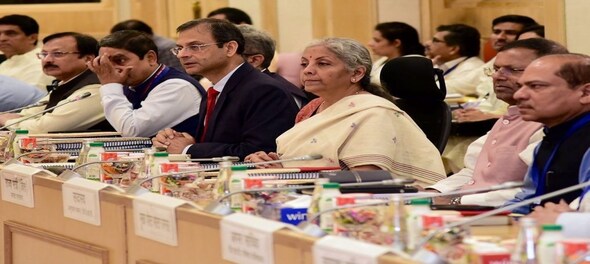
In what could be a game changer for the current GST regime, the government is likely to explore the possibility of shifting to a 3-slab structure in the coming fiscal.
According to sources in the know of the development, “Rate rationlisation is likely to be top priority for GST Council in the coming fiscal and the council could begin the discussion on moving to a 3-slab structure as next phase of GST.”
But what could rate rationalisation mean for the PEOPLE of the country?
Well! Sources say that, “Rationalisation could move items across slabs. But, while undertaking thew rationalisation exercise the government will be cautious of the overall tax incidence.”
Rate rationalisation was a plan envisaged by former Finance Minister Arun Jaitley. After the launch of GST, in 2017, the then Finance Minister Arun Jaitley had hinted at the scope of moving to a 3-slab structure. Jaitley in August 2017 had indicated that there could be scope for rationalisation of rates under the Goods and Services Tax (GST) as its implementation progressed. “I do concede that as it (GST) moves forward, there will be scope for rationalising the rates. There, probably, will be scope that the two standard rates of 12% and 18 per cent, after some time, could be clubbed into one. That is a fair possibility and a suggestion,” Jaitley had said replying to debate on the two bills related to GST in J&K.
So which rates are likely to change?
However, when it comes to the discussion on rate rationalisation now, sources share that “28% slab is likely to remain as in and the rejig is likely for the slabs of 5%, 12% and 18%.”
Not just the slabs, “Correction of inverted duty structure will also be a crucial part of discussion,” sources added.
The GST council is also expected to now meet only after the new government takes charge post the upcoming general elections.
The move comes on the back of the fact that the government now sees GST revenues stabilising the “Government is confident of garnering Rs 1.8 lakh cr of average monthly revenue in FY25, which could be a good enough reason to tinker with the slab structure,” sources added.
But, How will rate rationalisation happen?
The future course of action to let the GST council move towards rate rationalisation path will be lead by a discussion and presentation of a detailed report by a Group Of Ministers on Rate rationalisation.
A group of minister (GoM) panel on the matter was earlier in existence under the chairmanship of Karnataka’s FM and CM – BS Bommai, which could manage to present only an interim report and a few changes on inverted duty structure in June 2022’s Chandigarh GST council meet.
However, the panel had sought more time to finanlise its report.
Post this, the panel was reconstituted in November 2023, under the chairmanship of UP’s Finance Minister Suresh Khanna. But, even this panel has not met even once.
Sources believe that the panel will meet only post the results of the upcoming General elections. The GoM has member states, which includes: UP, Goa, Bihar, Rajasthan, west Bengal, Karnataka and Kerela.
It is now to be seen when does the GoM convene its meeting and when does it present a view in front of the GST council.
Check out our in-depth Market Coverage, Business News & get real-time Stock Market Updates on CNBC-TV18. Also, Watch our channels CNBC-TV18, CNBC Awaaz and CNBC Bajar Live on-the-go!


2024 Lok Sabha Elections | What does a low voter turnout indicate for NDA and I.N.D.I.A Bloc
Apr 29, 2024 5:48 AM
'Borrowed' leaders: Congress hits out at AAP for not fielding their own candidates in Punjab
Apr 28, 2024 9:53 PM
EC asks AAP to modify election campaign song and Kejriwal's party is miffed
Apr 28, 2024 9:25 PM

